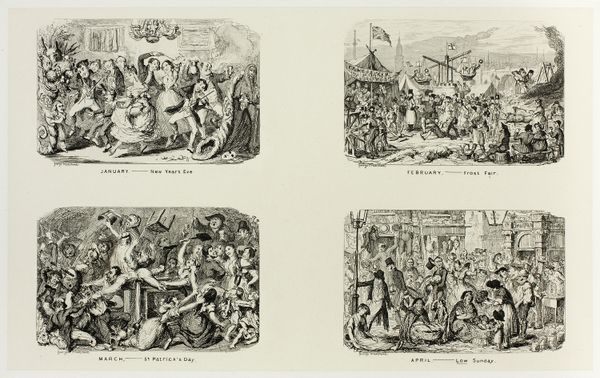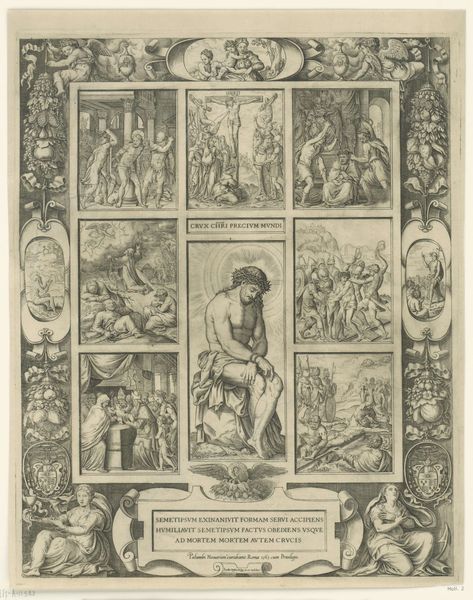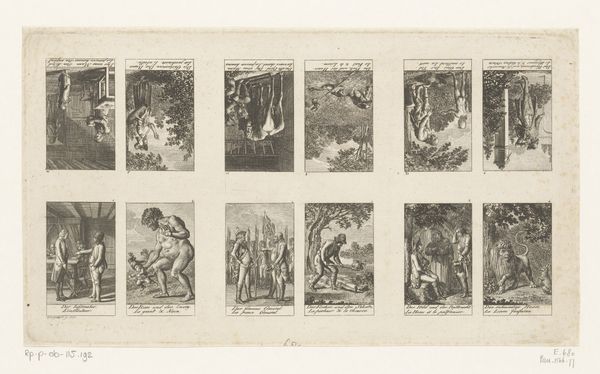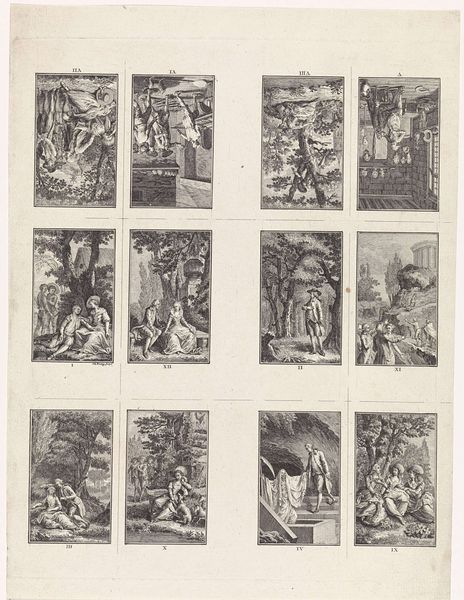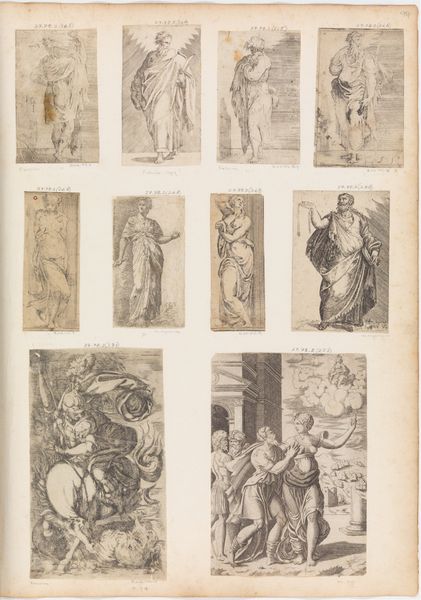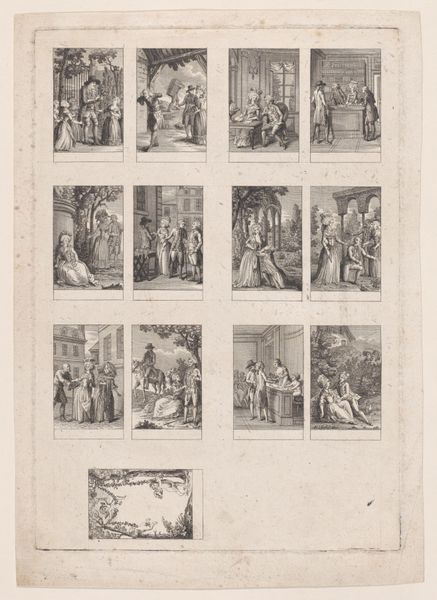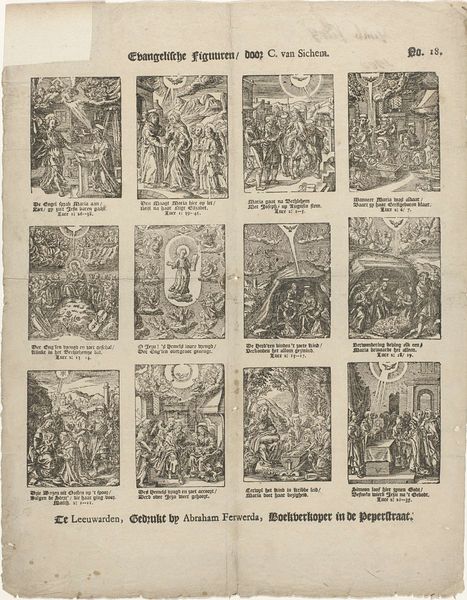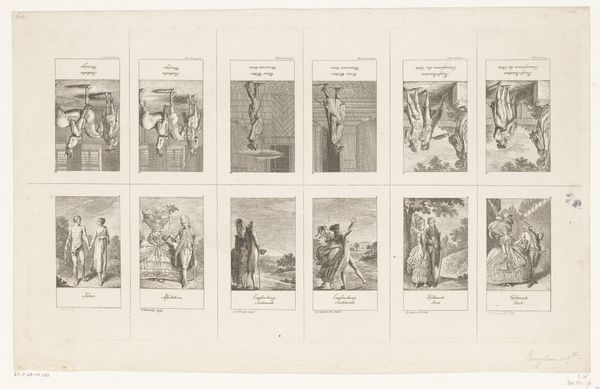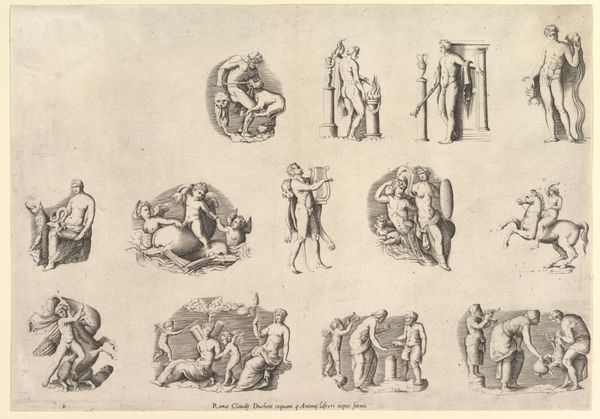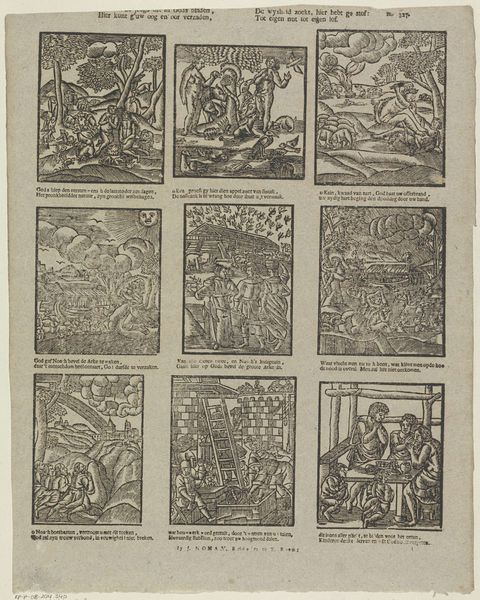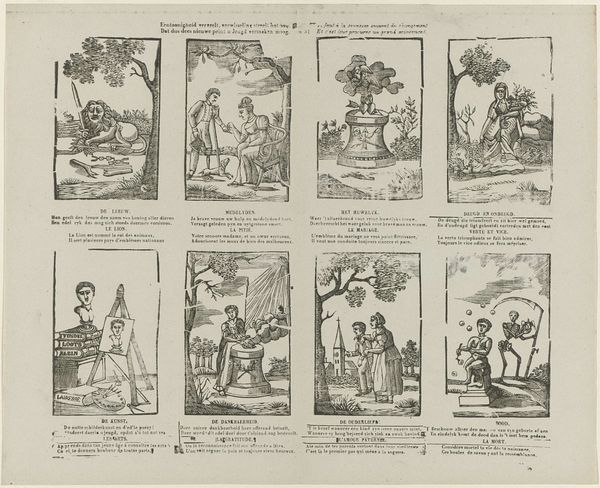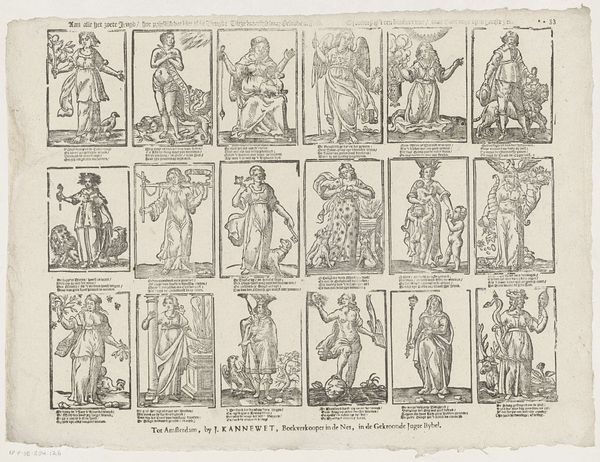
De voorstellingen op de zijden van de tempel in het vuurwerk te Leeuwarden bij de inkomst van het pasgetrouwde paar prins Willem IV en Anna van Engeland, 1734 1734
0:00
0:00
print, engraving
#
allegory
#
baroque
# print
#
figuration
#
line
#
cityscape
#
history-painting
#
engraving
Dimensions: height 384 mm, width 463 mm
Copyright: Rijks Museum: Open Domain
Curator: This engraving by Jan Caspar Philips, created in 1734, documents the firework displays in Leeuwarden celebrating the arrival of the newlywed couple, Prince William IV and Anna of England. Editor: The symmetry and detailed renderings give it a sense of formal spectacle, but the monochromatic medium mutes the vibrant energy you would expect from such a celebratory event. It almost feels like a blueprint. Curator: Indeed. Philips' choice of engraving highlights the precise craftsmanship involved. The work offers insight into the societal rituals surrounding power, in which the material manifestation of celebrations serves as a crucial component for the construction of sovereignty. Editor: Looking closer, you notice how the depictions of classical gods and allegorical figures seem to legitimize royal authority through established iconography. It also tells a tale of cultural exchange—this wedding joining Dutch and British power. How did such union reshape trade relations, for instance? Curator: This print’s function as a reproduction, moreover, is significant. These engravings provided a form of controlled dissemination. While ostensibly documenting a public celebration, the controlled reproduction in print ensured an official, regulated narrative circulated amongst a broader audience. Editor: Right, making it less about documentation and more about managing the perception of power. Even the architectural construction—this temporary temple constructed for the fireworks display—was made to serve ideological functions. Curator: Consider the labor invested in erecting temporary structures, manufacturing fireworks, and the subsequent creation of the engraving. Who was benefiting from these massive expenditures, and whose labor made it possible? Editor: It compels me to think about the colonial histories intertwined with such displays of wealth and authority. Were any of the raw materials for the fireworks sourced from exploited colonies? What roles did the labor of colonized people play in producing these displays of grandeur? Curator: The production methods tell their own story, revealing the infrastructure of artistic practice, as well as broader historical power structures. Editor: Precisely! It reminds us that even celebrations can be products of specific cultural and economic forces that must be questioned. Curator: Thank you. It has been fascinating exploring how this print showcases craftsmanship, commemorates royal authority, and sparks questions around the narratives produced in the moment and beyond. Editor: I’m left with an important takeaway that celebrations are in themselves carefully constructed events of propaganda that further extend to printed recreations to shape the political perspective of the people.
Comments
No comments
Be the first to comment and join the conversation on the ultimate creative platform.
